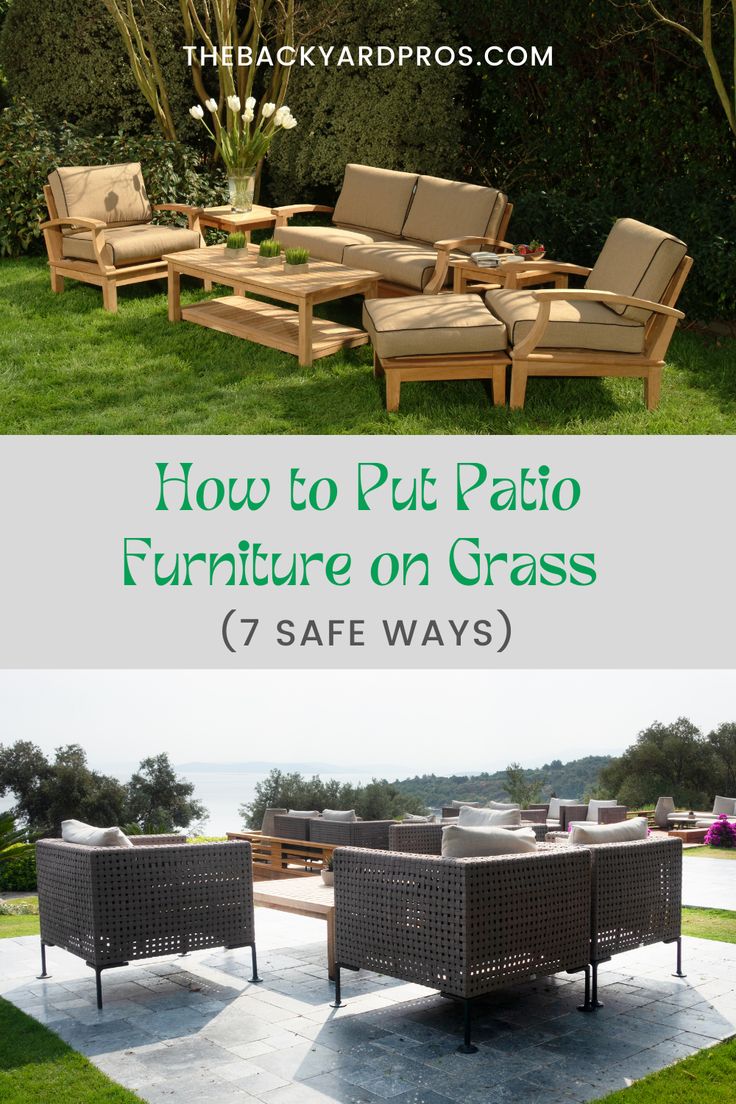As the weather warms up and outdoor living becomes increasingly enticing, many homeowners ponder the question of placing patio furniture on grass. It seems like a straightforward decision at first glance: after all, grass is a natural extension of your garden, begging for that charming outdoor setup. However, while the allure of a picturesque arrangement is undeniable, the practicalities are a bit more nuanced.
In this exploration, we will delve into various facets of this topic, examining the merits and challenges of placing patio furniture on grass while also considering alternative options, maintenance tips, and creative arrangements.
The Case for Placing Patio Furniture on Grass
One of the primary advantages of situating furniture on grass is the aesthetic appeal it brings. Lush greenery provides a vibrant backdrop for your outdoor oasis, creating an inviting atmosphere. Think of those warm summer evenings spent lounging under the stars with friends and family, where the natural environment accentuates your gatherings.
Moreover, grass can offer a softer, more comfortable underfoot experience compared to hardscape surfaces like concrete or stone. For families with young children, this aspect is particularly appealing, as grass can provide a safer space for play.
Potential Pitfalls
However, before you set up shop on your lawn, consider the downfalls. The first concern is stability. On uneven or soft ground, your furniture might shift, tipping over as guests settle in. This instability not only poses safety risks—it can also be frustrating during gatherings.
Secondly, moisture retention is a significant factor. Grass absorbs rainwater, and if your furniture is not designed to withstand moisture, it can become damaged over time. Metal furniture might rust, while wooden pieces could warp or rot. To mitigate this, select items specifically crafted for outdoor use, built from weather-resistant materials.
Soil Damage and Grass Health
Additionally, frequent placement of heavy furniture can compact the soil beneath, hampering grass growth. The pressure can inhibit the flow of air and nutrients, leading to unsightly patches in your lawn. To avert such consequences, consider rotating the position of your furniture periodically or using lightweight options that won’t burden the grass too severely.
Alternative Solutions
If the potential challenges of placing patio furniture directly on the grass seem daunting, alternative solutions abound. Using outdoor rugs can create a defined space for your furniture while providing protection for the grass underneath. These rugs absorb wear and tear, allowing your lawn to breathe and maintain its health.
Moreover, you could consider lightweight, portable furniture that allows for easy repositioning. When arranging your outdoor furniture, strategize by selecting durable pieces, such as resin or aluminum, that are resistant to weather conditions. This choice ensures that your setup remains appealing irrespective of the elements.
Creative Arrangements
When it comes to the actual arrangement of your patio furniture, creativity is key. A cluster of seating faces a focal point—be it a fire pit, barbecue, or a picturesque view—can set the stage for engaging conversations. Think about the flow as you place chairs and tables, ensuring that guests can easily move about without tripping over furniture or navigating obstacles.
Creating zones can also enhance usability. If your yard is spacious enough, designate different areas for dining, lounging, and playing. This separation ensures that each space serves its unique purpose while optimizing the overall functionality of your outdoor living area.
Maintenance Considerations
To preserve the integrity of your lawn and furniture, proactive maintenance is essential. Regularly aerate your grass, especially in high-traffic areas, to allow air, water, and nutrients to penetrate the soil. This practice will bolster the health of your grass and prevent compacting issues.
Furthermore, clean your furniture periodically to remove dirt, pollen, and moisture that can deteriorate materials. Utilizing covers during inclement weather or when not in use will further extend the lifespan of your outdoor pieces.
Final Thoughts
In conclusion, while placing patio furniture on grass can be both visually appealing and comfortable, it’s crucial to weigh the pros and cons carefully. With the right preparations and mindful practices, you can create an enchanting outdoor retreat without compromising the health of your grass or the longevity of your furniture.
Whether you opt for strategic arrangements, alternative solutions, or diligent maintenance, the objective remains the same: to foster an inviting atmosphere that encourages relaxation and enjoyment in the great outdoors. Embrace the possibilities, design thoughtfully, and relish the time spent in your beautiful outdoor space!
